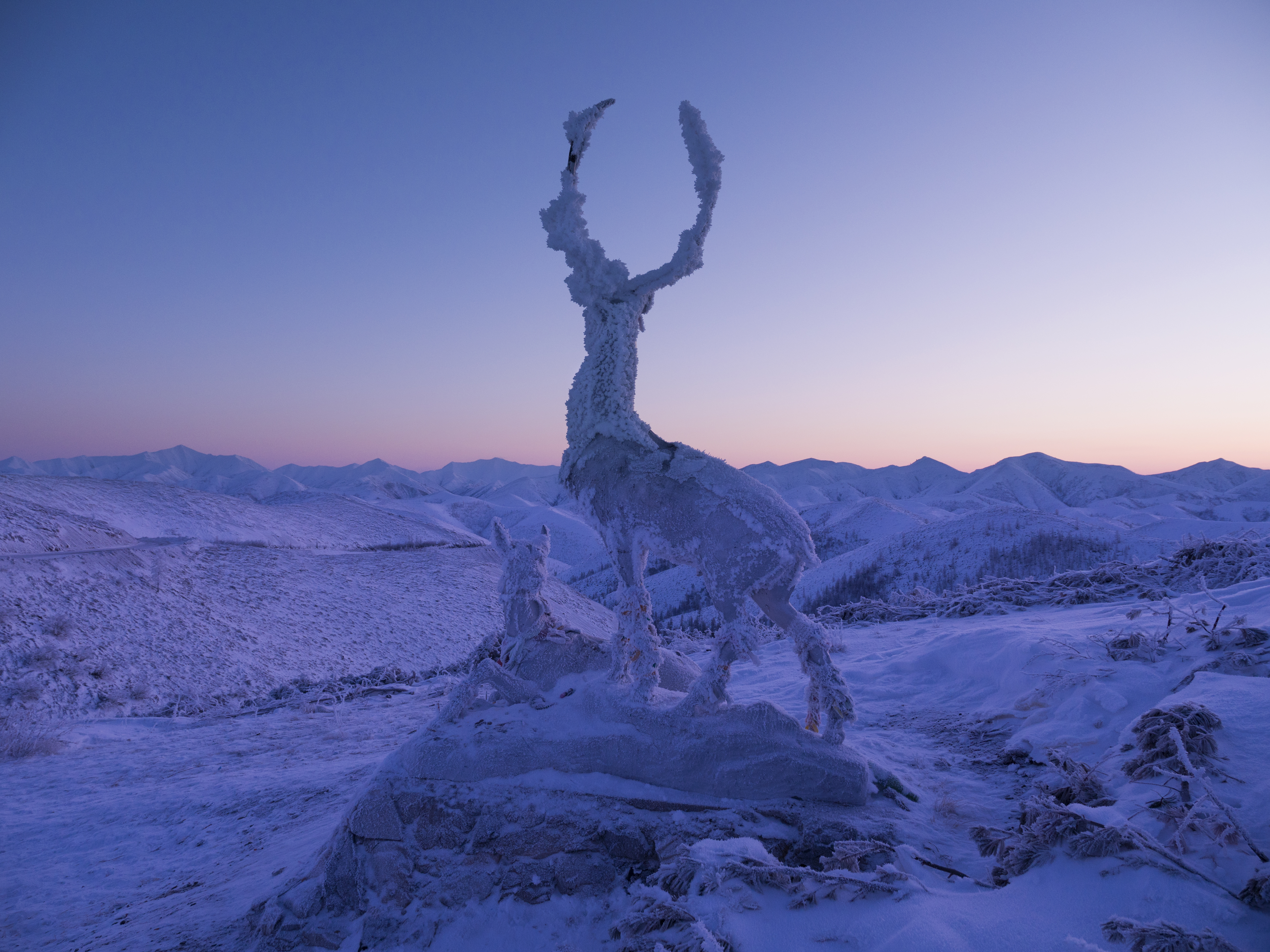RFE/RL photographer Amos Chapple traveled to Russia’s Sakha Republic to meet three locals who work outdoors through the world’s harshest winters.
The Marketeer
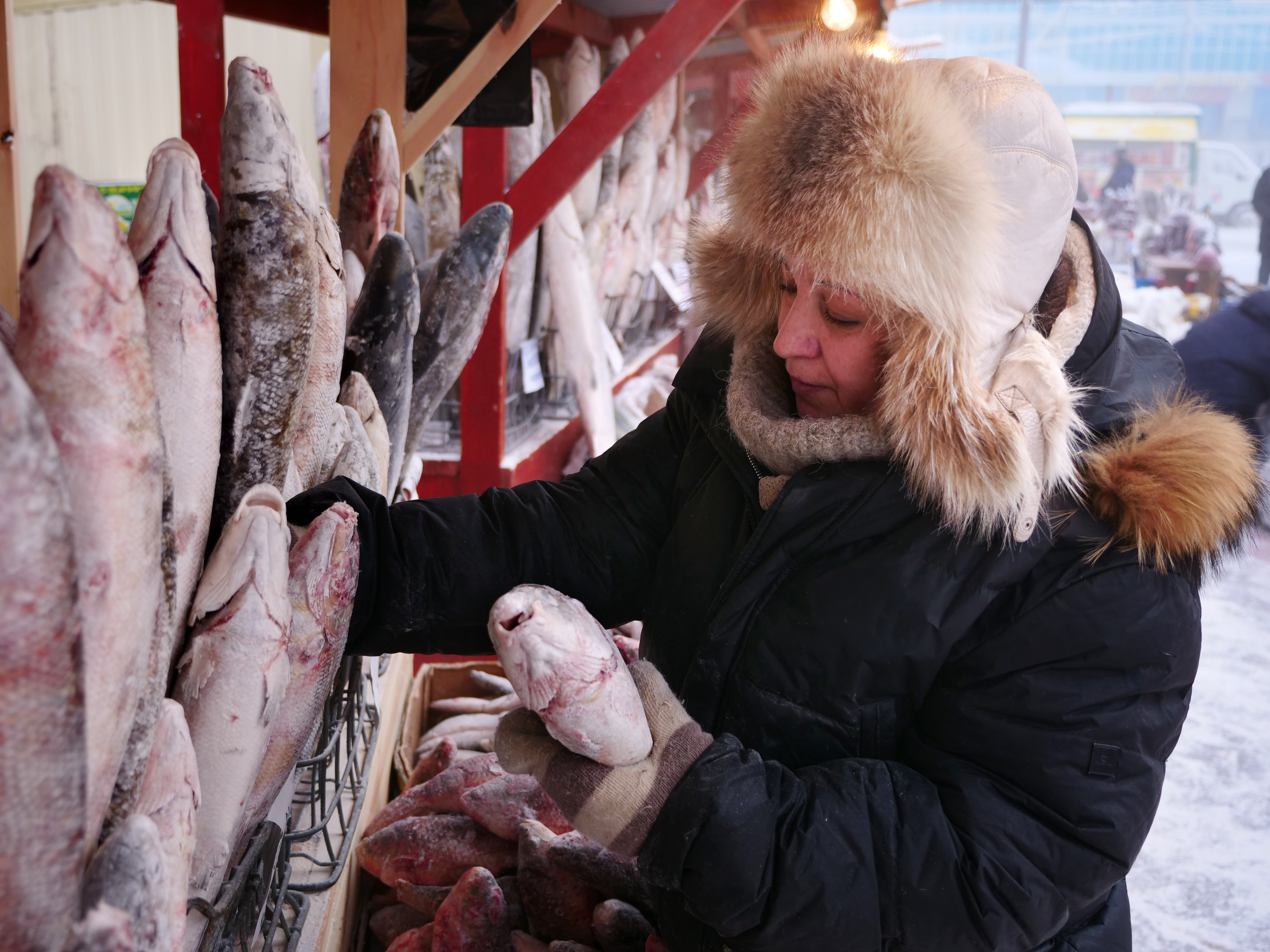
For the past 15 years, Sona Ugurchiyeva has worked in Yakutsk’s “Peasant’s Market” waiting for customers at her fish stall through winters that regularly drop below -50C.

Ugurchiyeva moved from her native Ingushetia region to Yakutsk in 1993, as unrest mounted in Russia's North Caucasus.
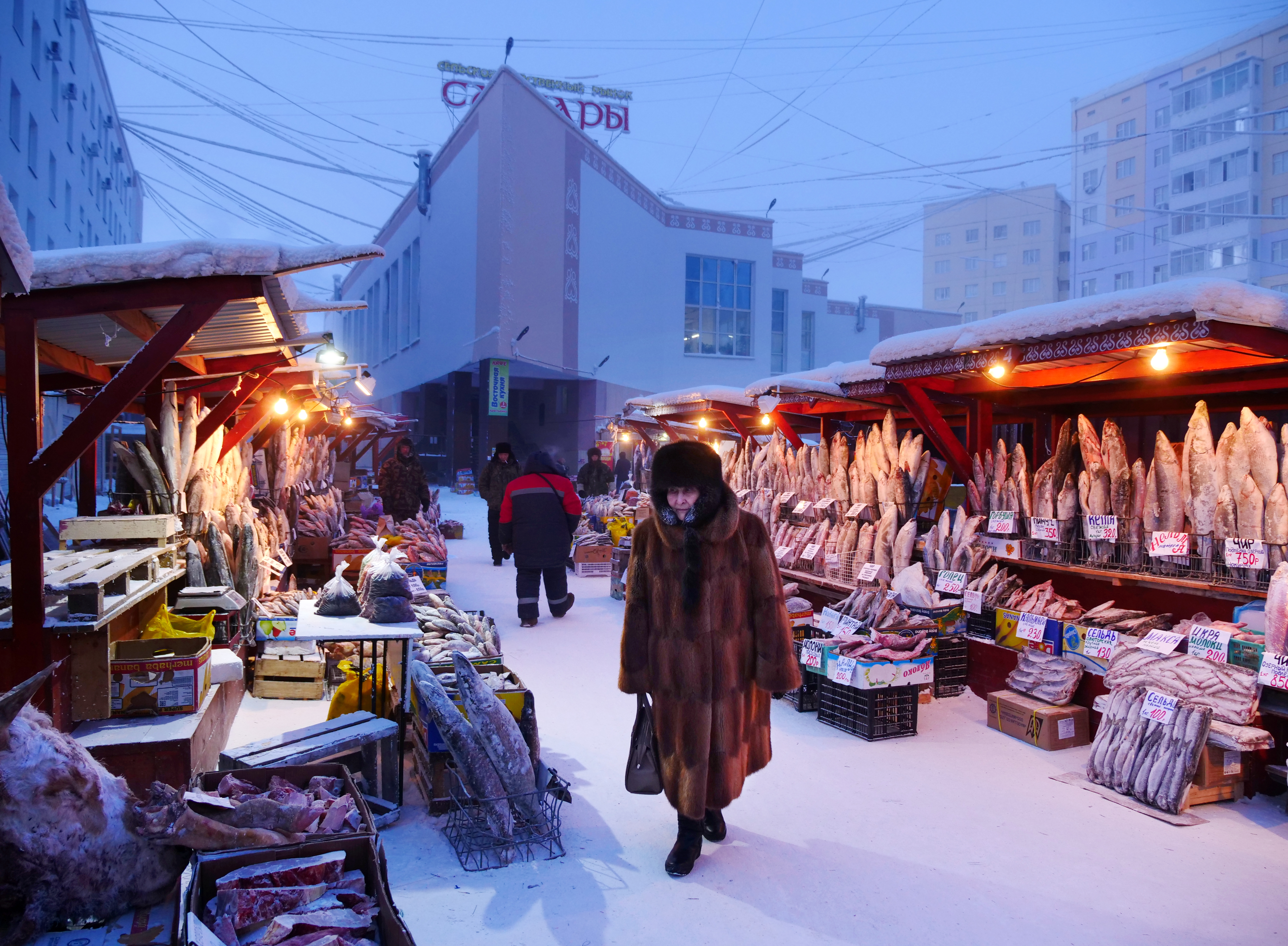
The Peasant’s Market, where Ugurchiyeva runs her stall, is a 50-meter corridor of frozen goods in the center of Yakutsk that remains open seven days a week through winter.
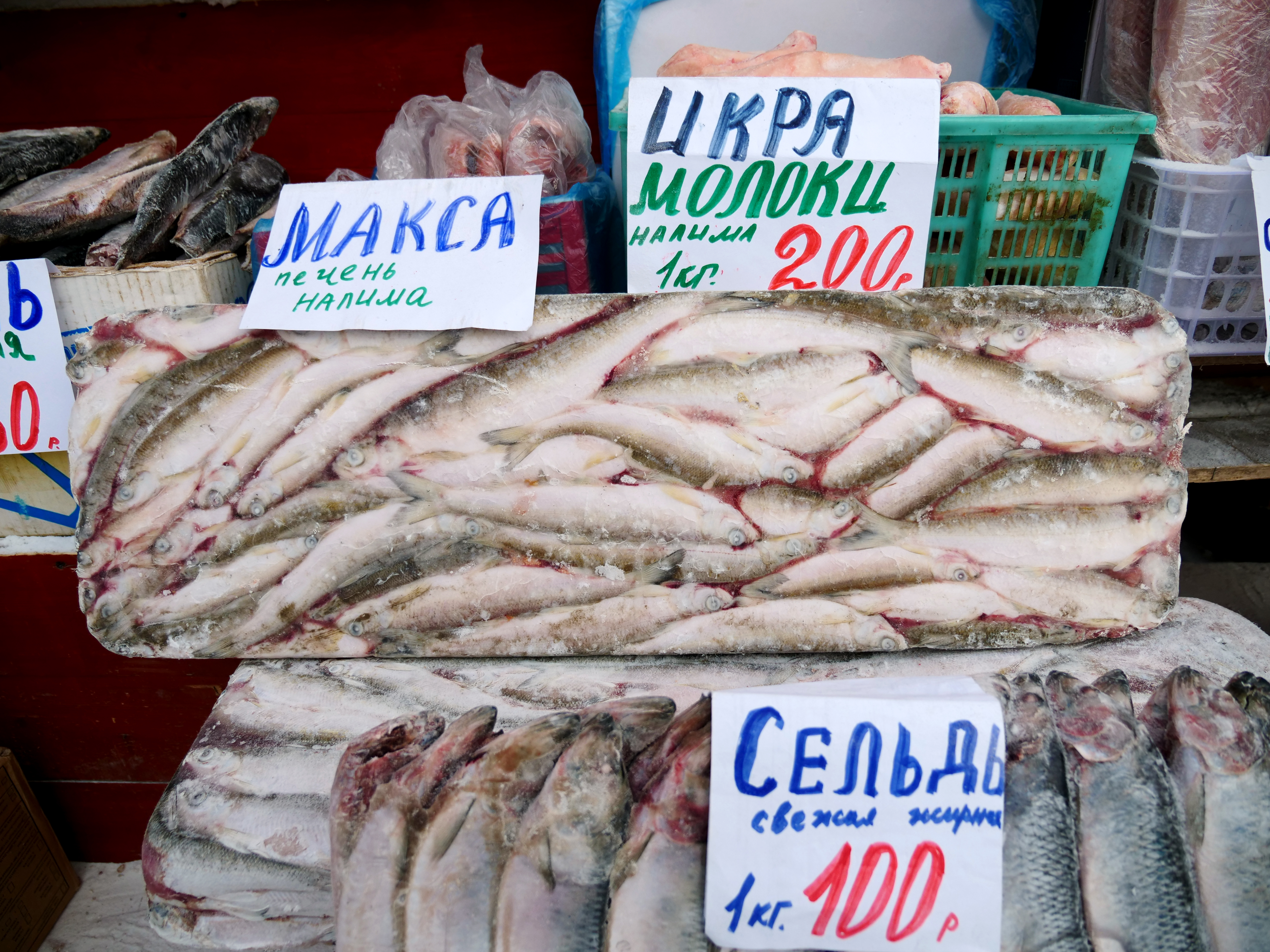
Between 7 a.m. and 7 p.m. locals come to buy fish that was snap frozen minutes after being hauled through the ice by fishermen working the rivers and lakes of Yakutia.
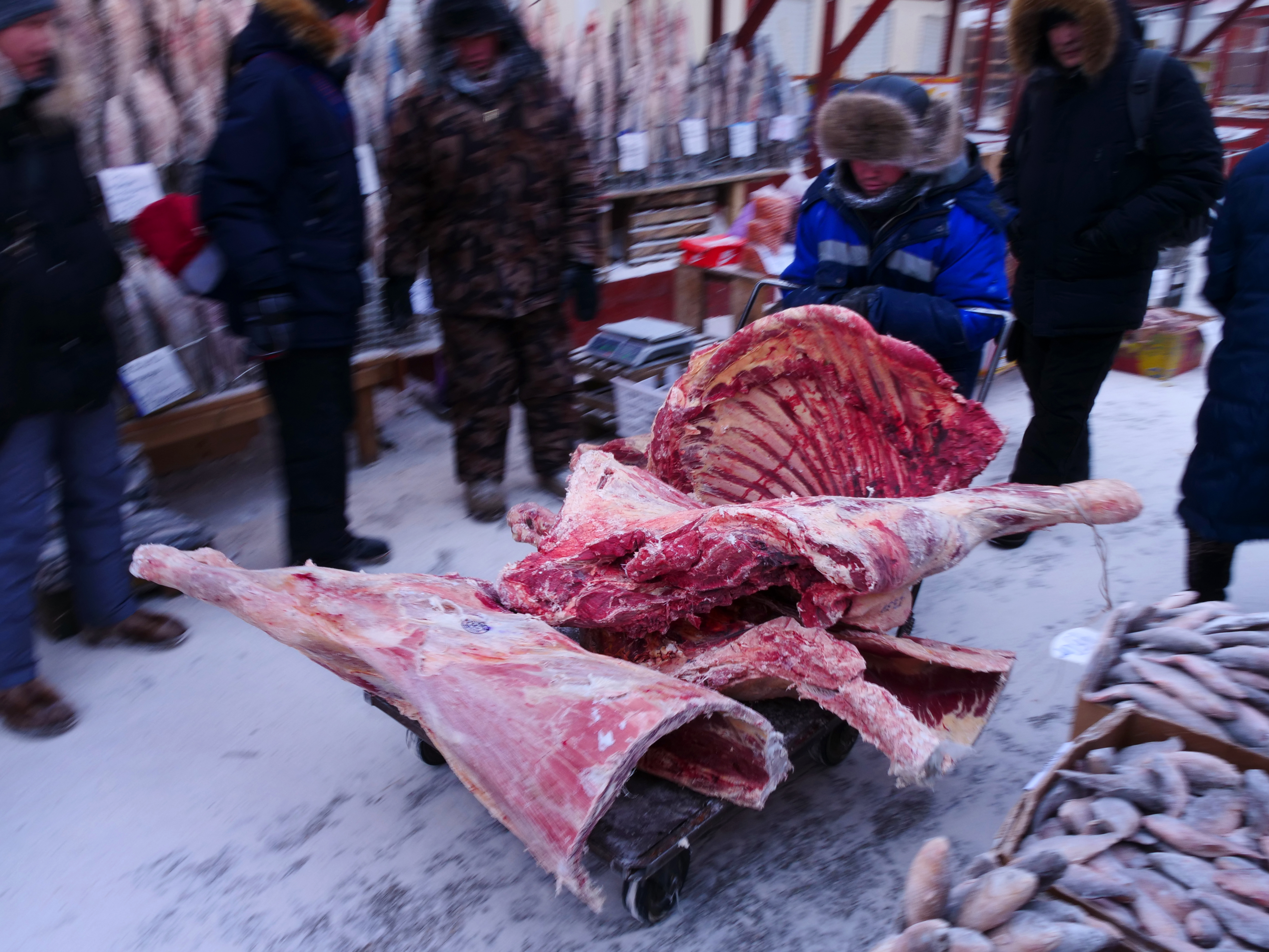
In addition to fish, the market stocks beef (pictured) and reindeer meat that is cut into pieces with hacksaws…
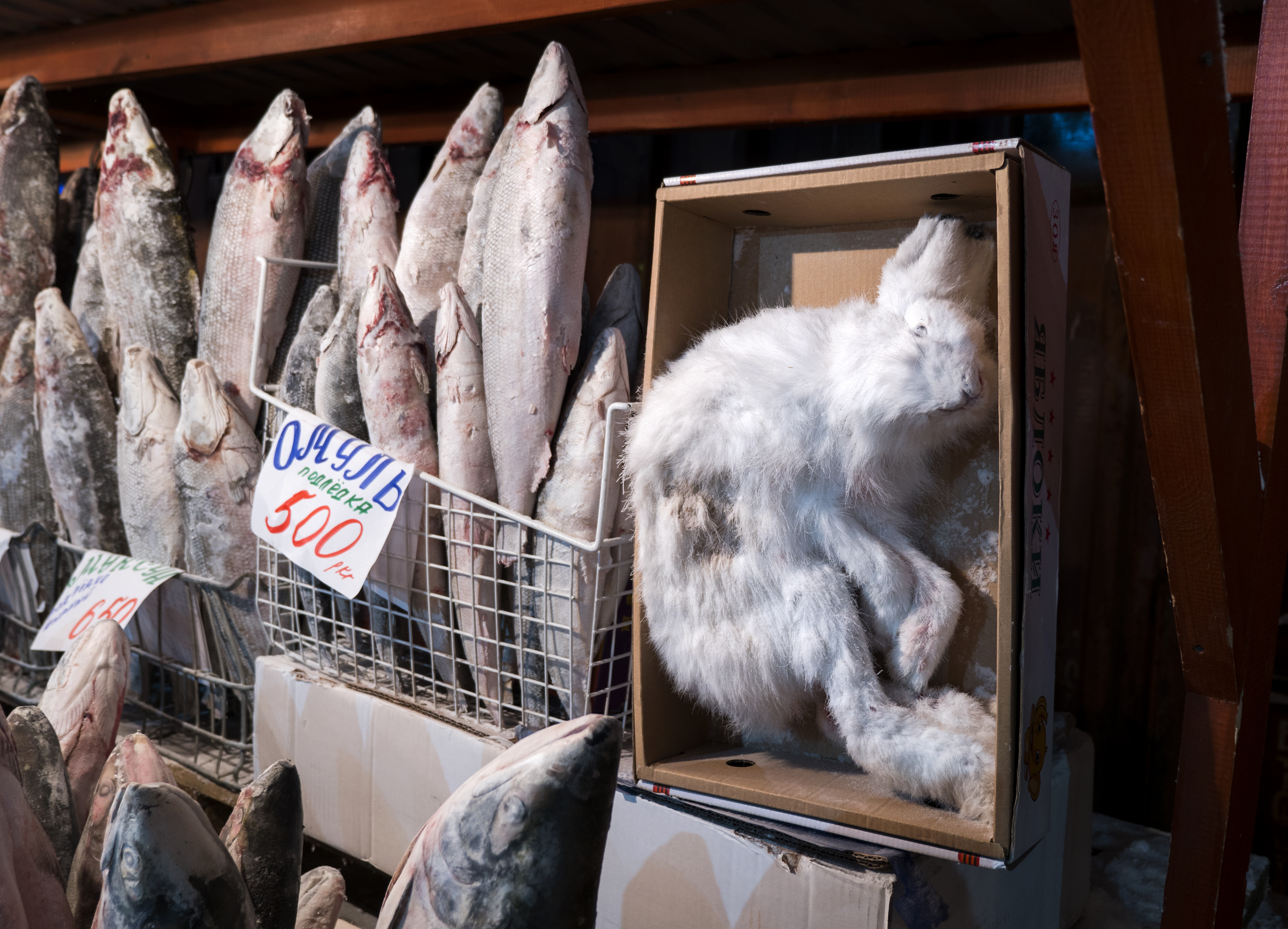
And even arctic hares, sold for 1,500 rubles ($26) each. The wild hares are preferred roasted in a sour-cream sauce.
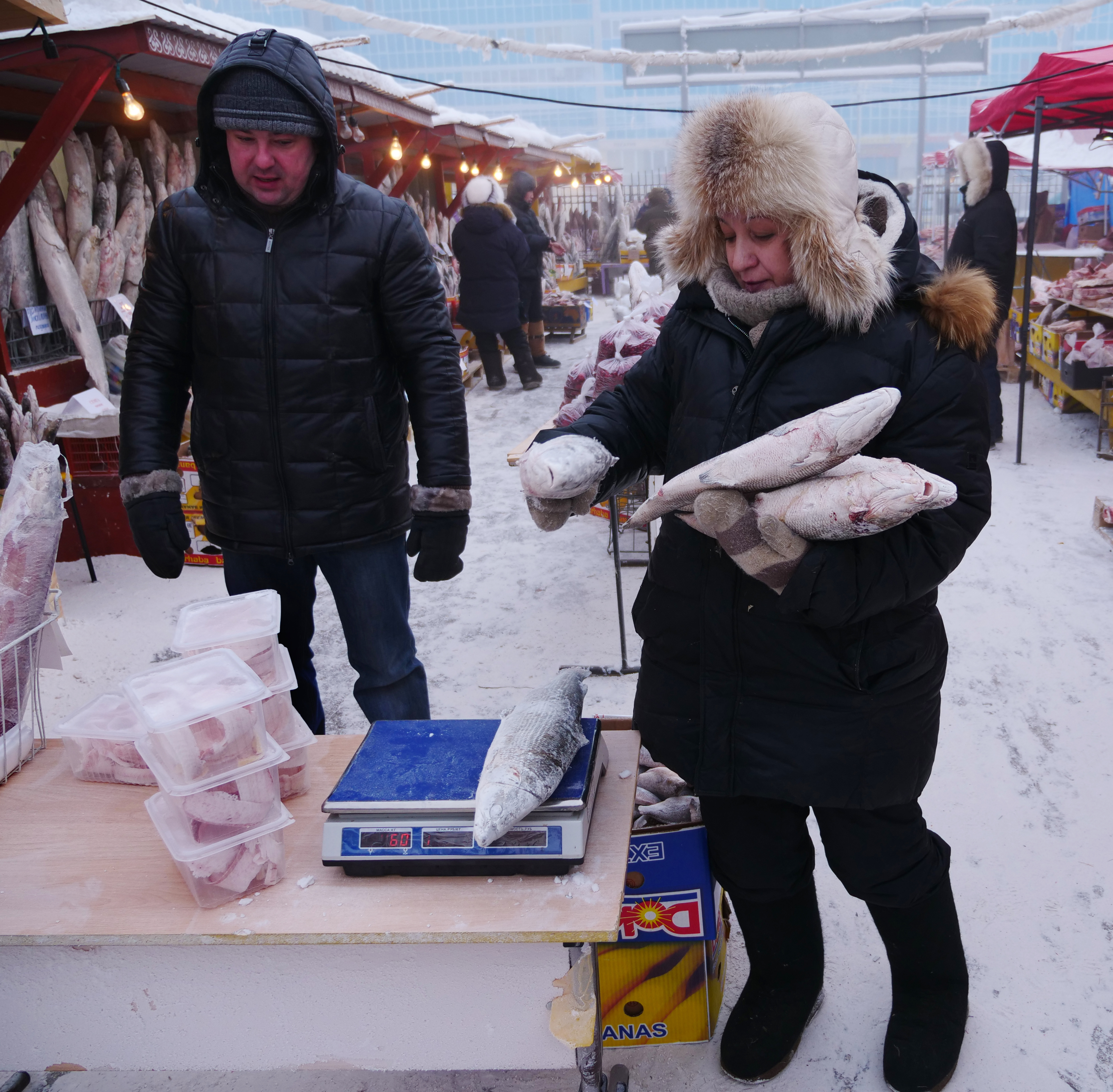
Ugurchiyeva weighing a stack of fish for a customer. The 56-year-old wears three sweaters under her jacket, as well as woolen gloves and felt boots. She knows well the dangers of underestimating the cold. “I got frostbite once. It was -58C but there was no wind so I wasn’t being careful. One of my cheeks froze white then started to peel.”
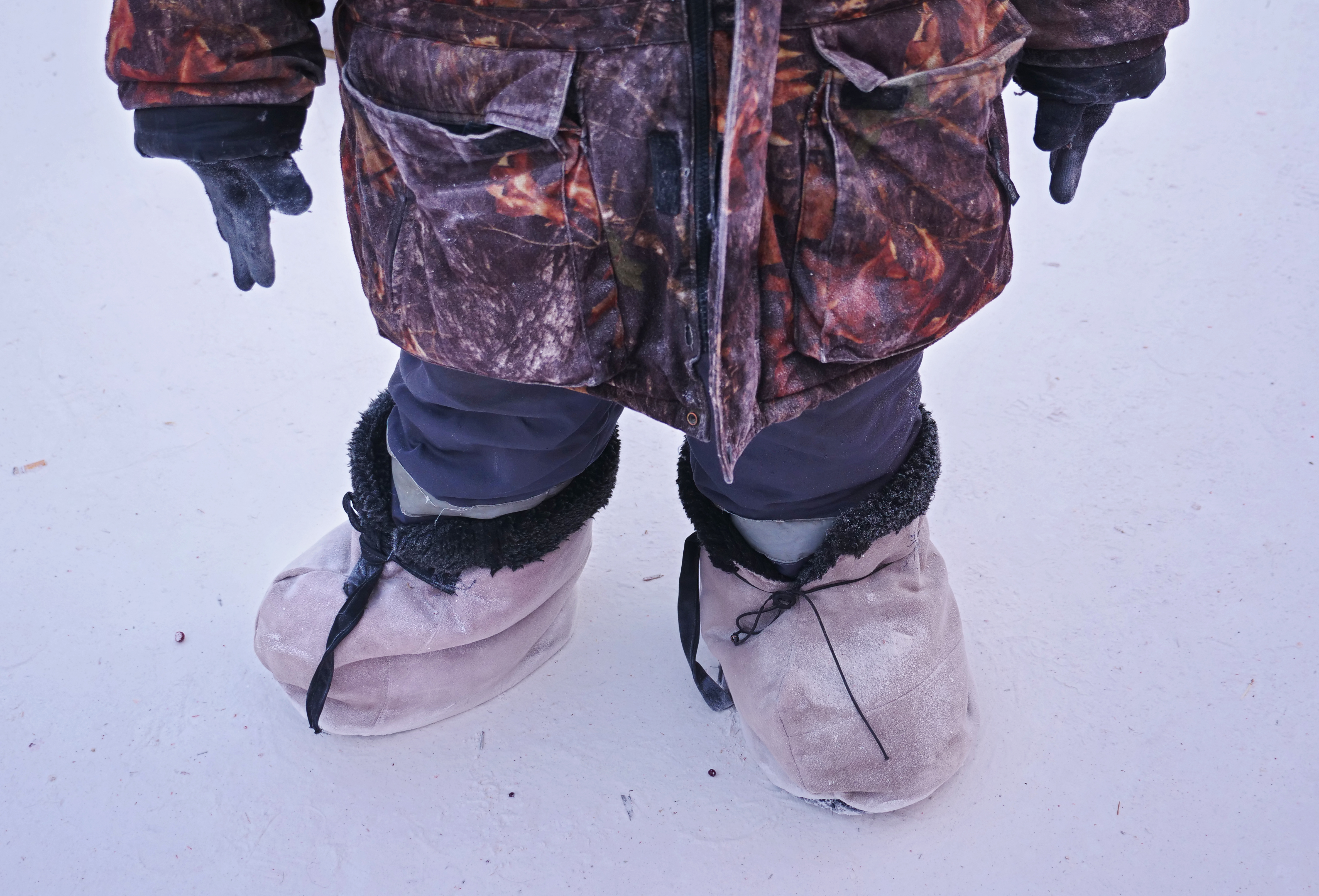
A market vendor with woolen “overboots.” Ugurchiyeva says it’s physically tough to work in the market “but also emotionally. Many people have tried to set up a stall here, but some people in the market made sure they had trouble selling anything so they gave up within a few months. But if you can survive for a couple of years here, you’ll be OK.”
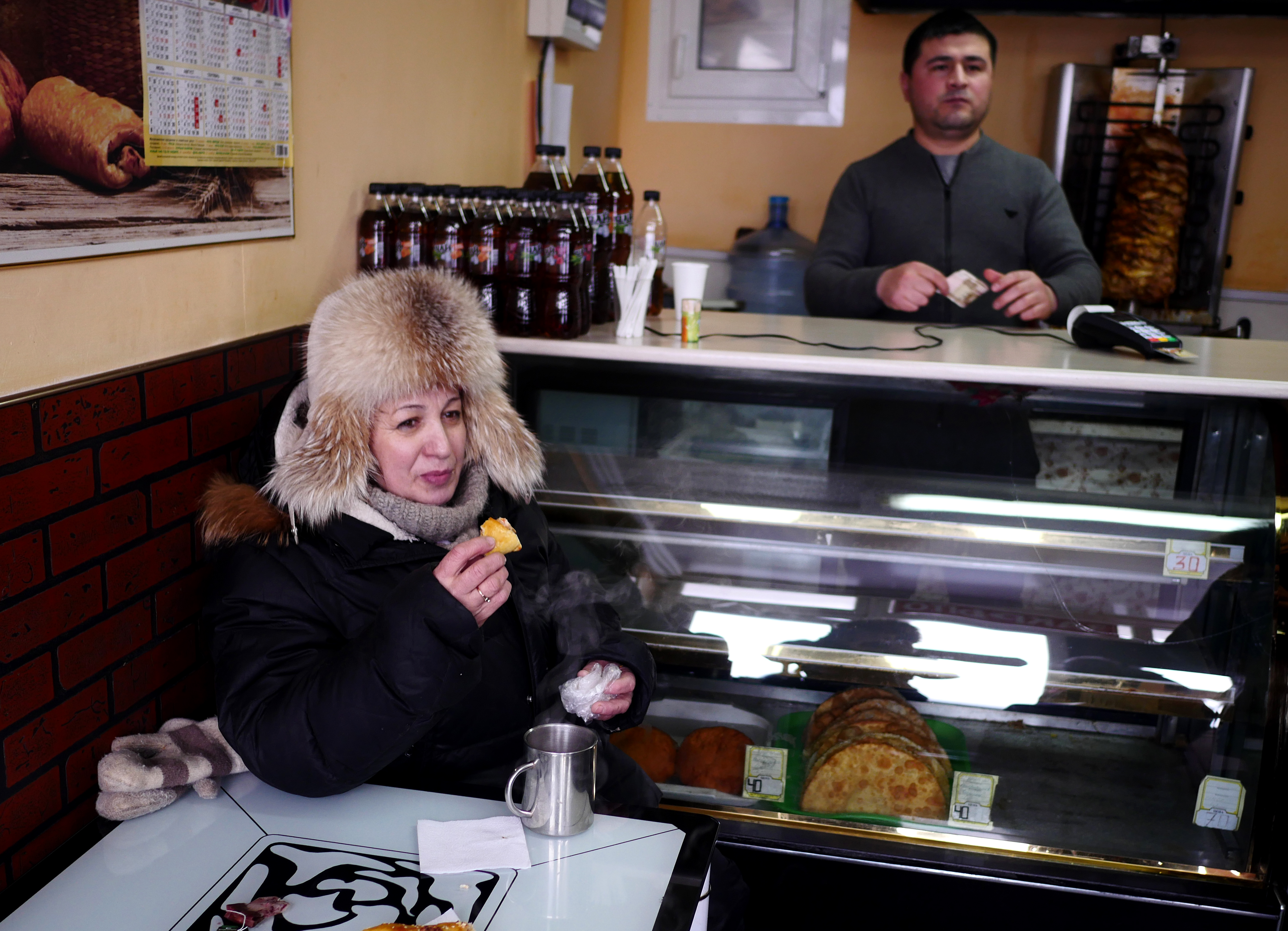
Ugurchiyeva on a tea break. The businesswoman says she has no regrets about her move to Yakutsk. “Everyone says they’ll come here for one summer, but then they end up staying forever. The weather makes things tough, but there’s a sense of community here that I love.”
The Wrecker

In the town of Khandyga, home to around 6,000 people, the shifting ground caused by the uneven thawing of permafrost each summer sags and collapses houses, like this Soviet-era apartment building.
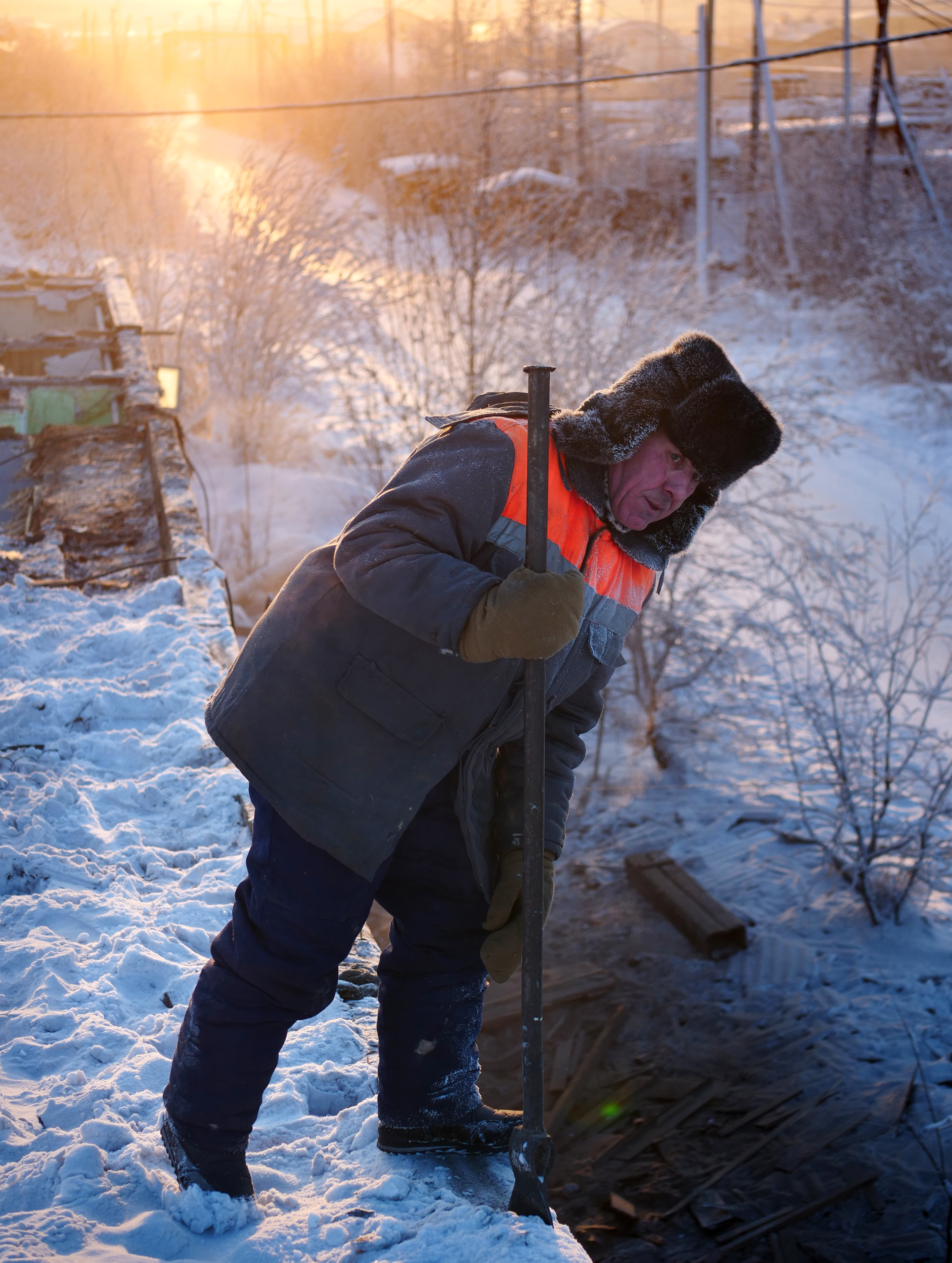
When this building was condemned, Tolik Yusipov and his brigade of workers were called out from Yakutsk, around seven hours away by car, to tear it apart with log splitters.

Yusipov estimates this building will take a month or more to pull apart. While a driver in the heated cab of a digger could raze it in a few hours, the valuable timber would be ruined.
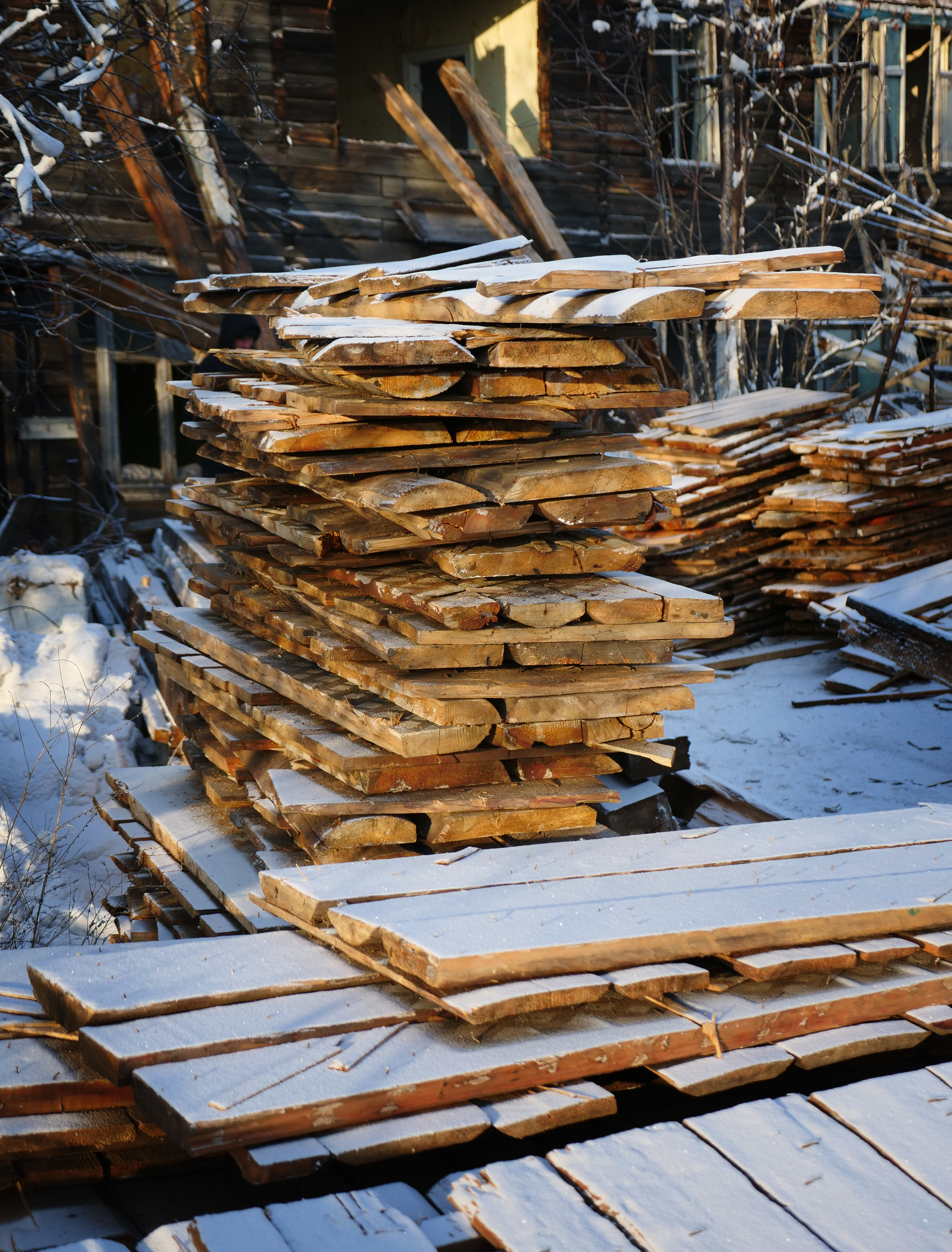
Timber that was pried off the condemned building ready to be carried away by a truck. The undamaged wood will be sold for reuse in summer construction projects.
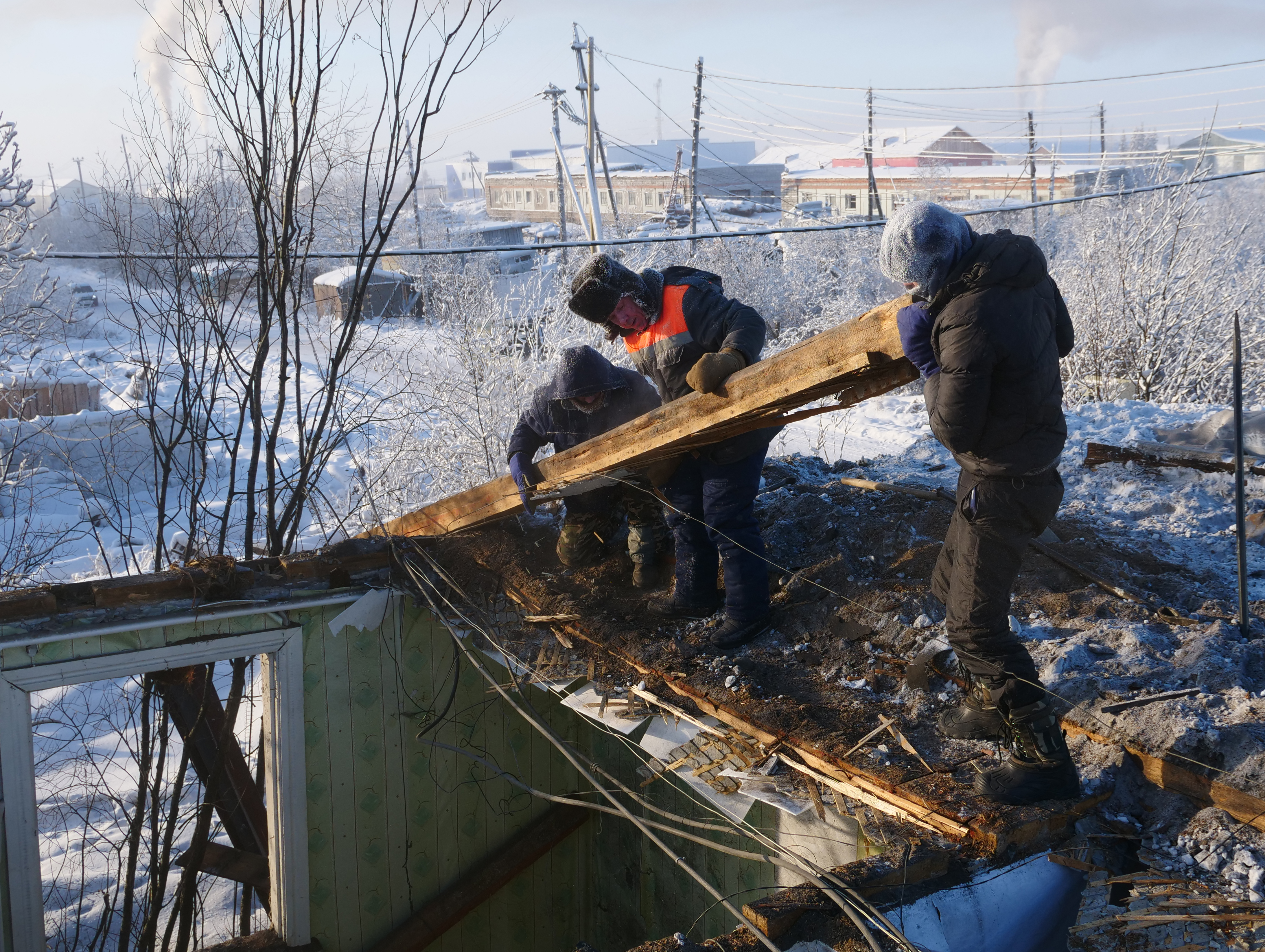
The brigade sliding a wooden beam off the roof after prying it out of its nails. Yusipov started the work when he was 18 years old and has been sent to work throughout the Sakha Republic, regardless of the weather.
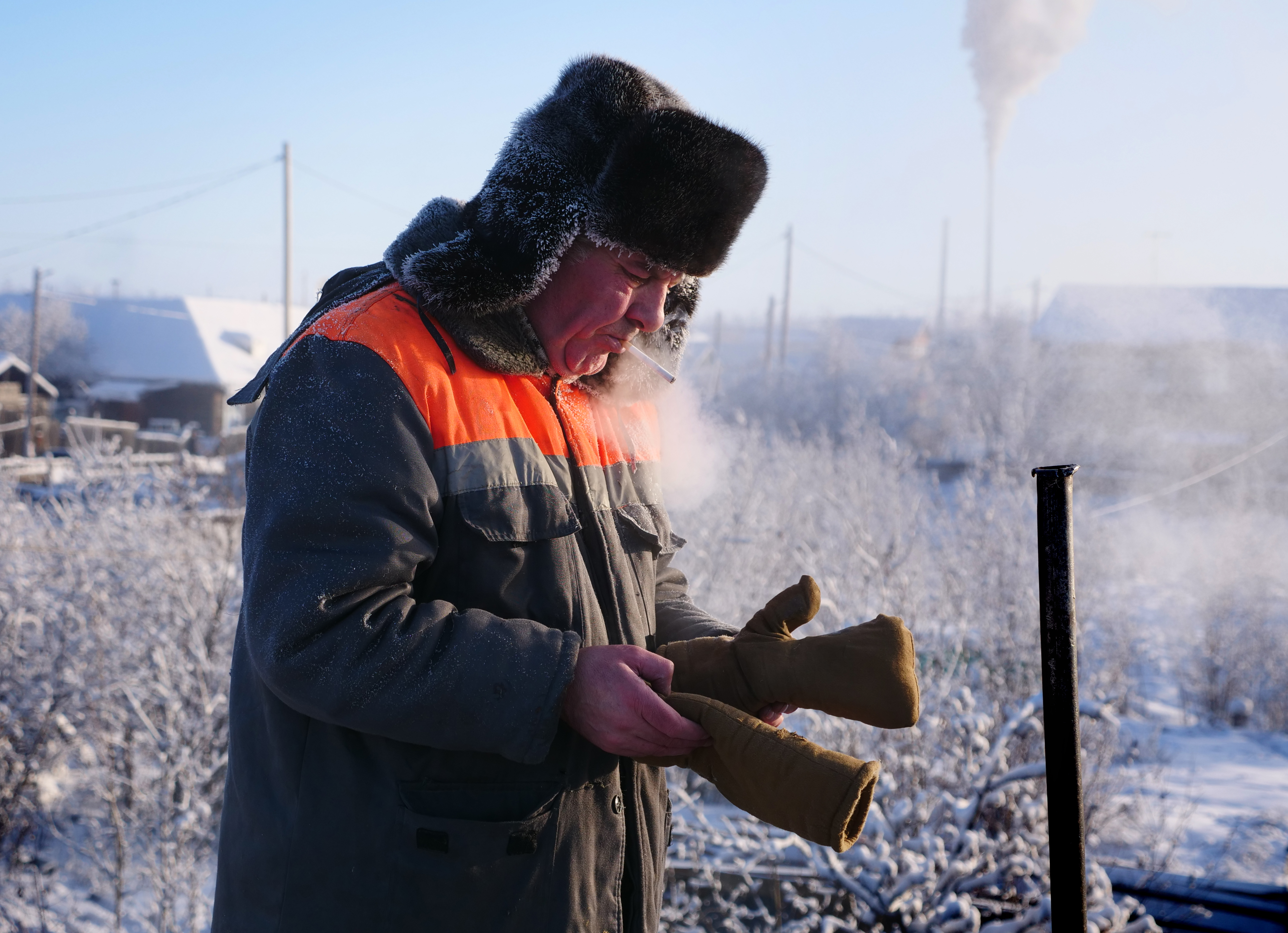
“Of course I prefer summer. When it’s really cold, your fingers don’t work properly.... Gloves are the most important thing when it gets cold because we’re holding onto these damn metal tools all day.”

Yusipov pries a beam as smoke from one of Khandyga’s 16 coal-fired heating stations streaks across the sky. The 47-year-old works his brigade from sunrise until the freezing blue hours after sunset.
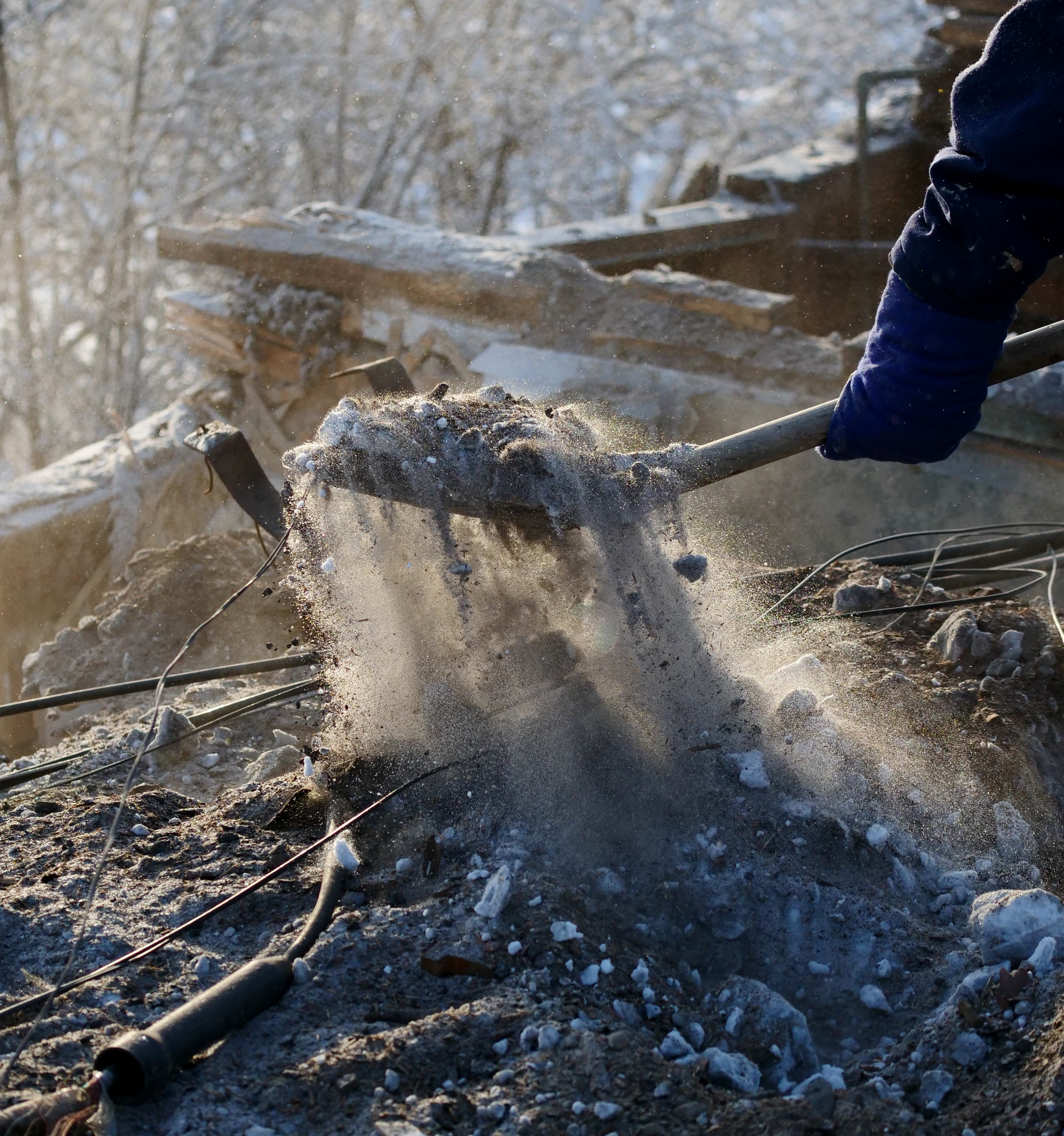
One of the brigade workers scoops rubble off the roof of the condemned building. Some parts of the structure appear to have been made from asbestos. When asked if the material poses a health risk during the work, Yusipov shakes his head, “That I don’t know.”
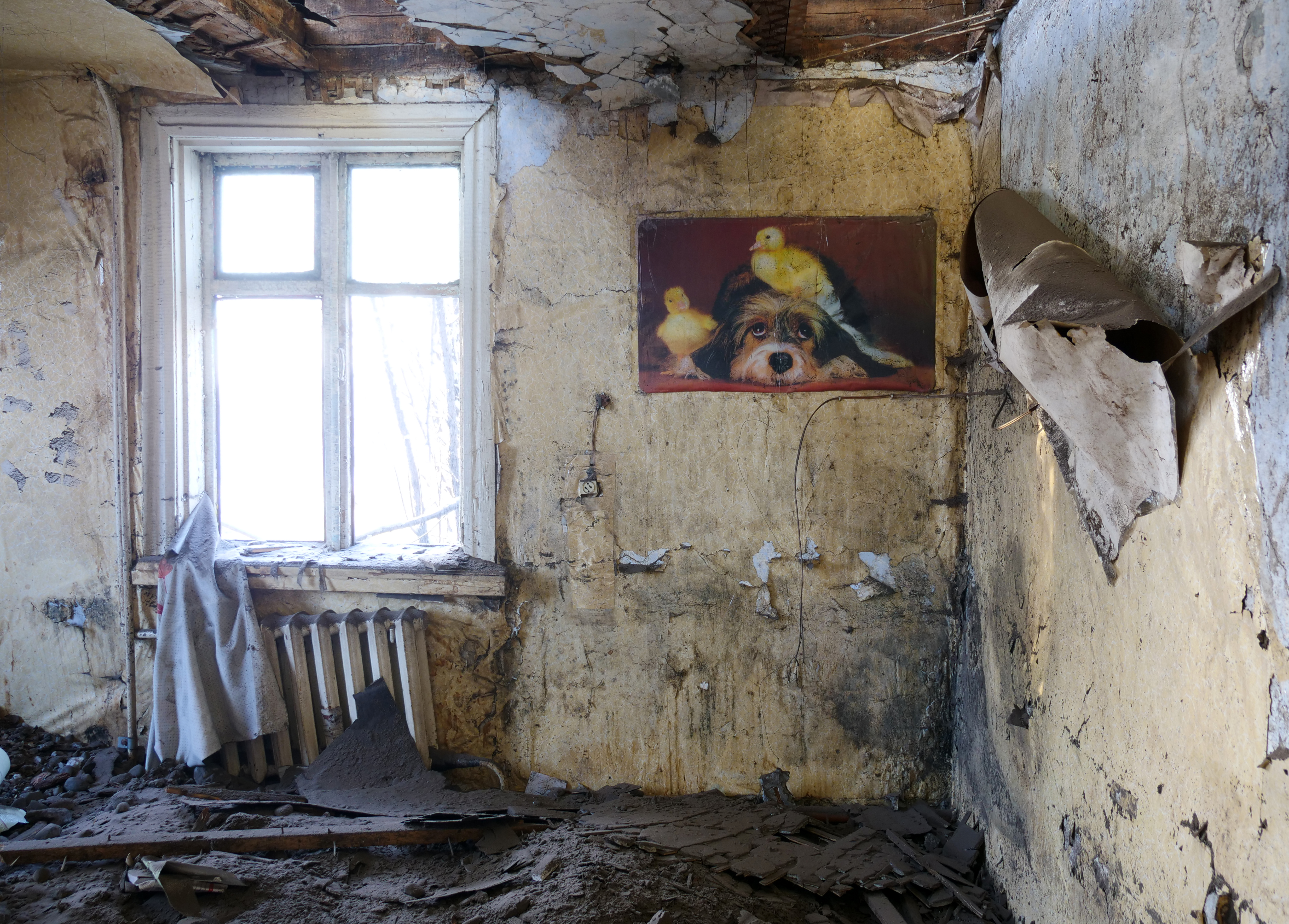
A room in the condemned house, which was evacuated in late 2017.
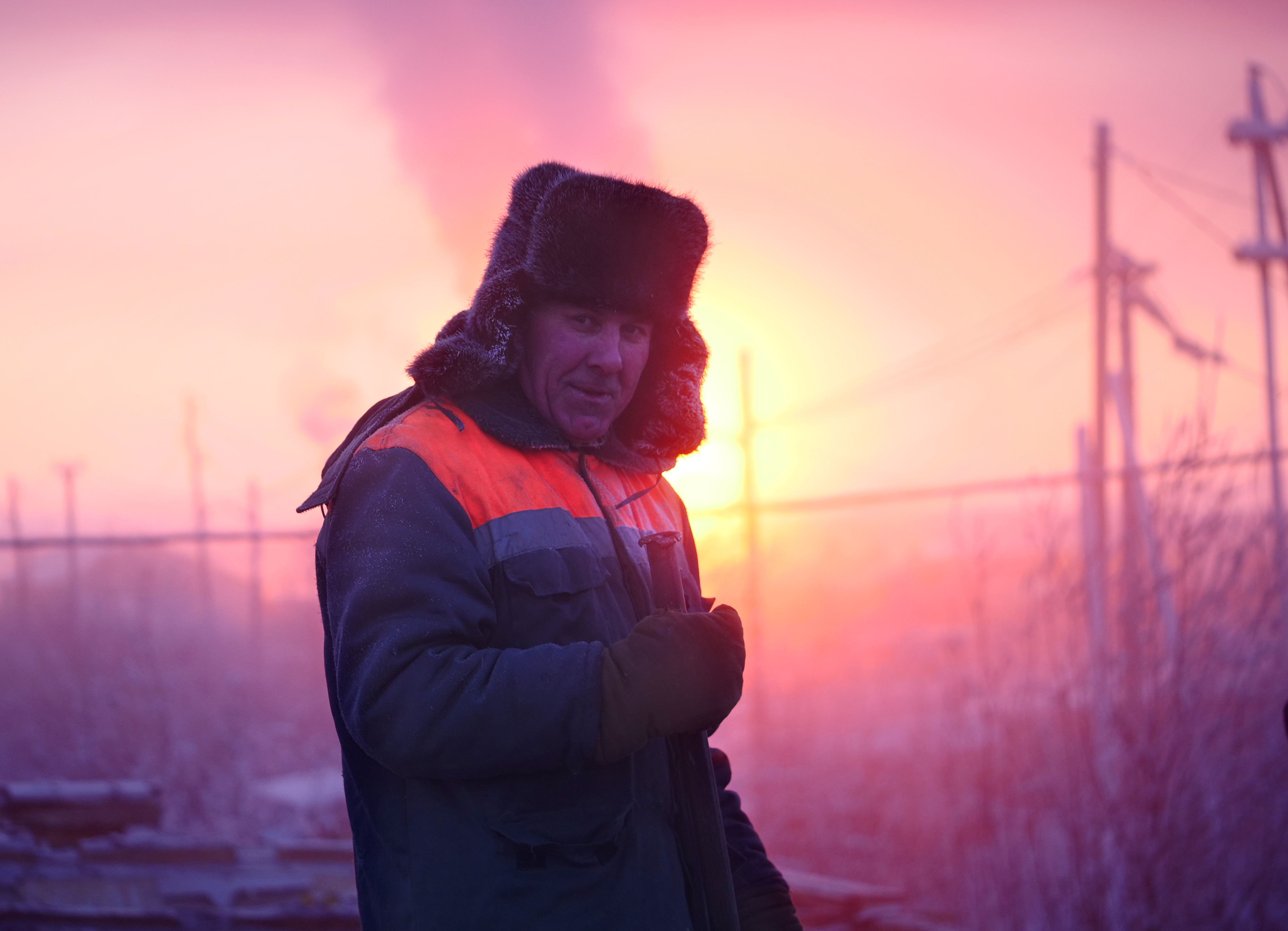
Yusipov doesn’t think much of the job, but nor does he seem bothered by the extreme conditions. “It’s just a job, they’re all the same. I wouldn’t say I enjoy it, but I know how to do it.... A man’s gotta work.”
The Herder

A few kilometers outside the village of Topolinoe, Grisha Zamyatin keeps a herd of 40 reindeer.
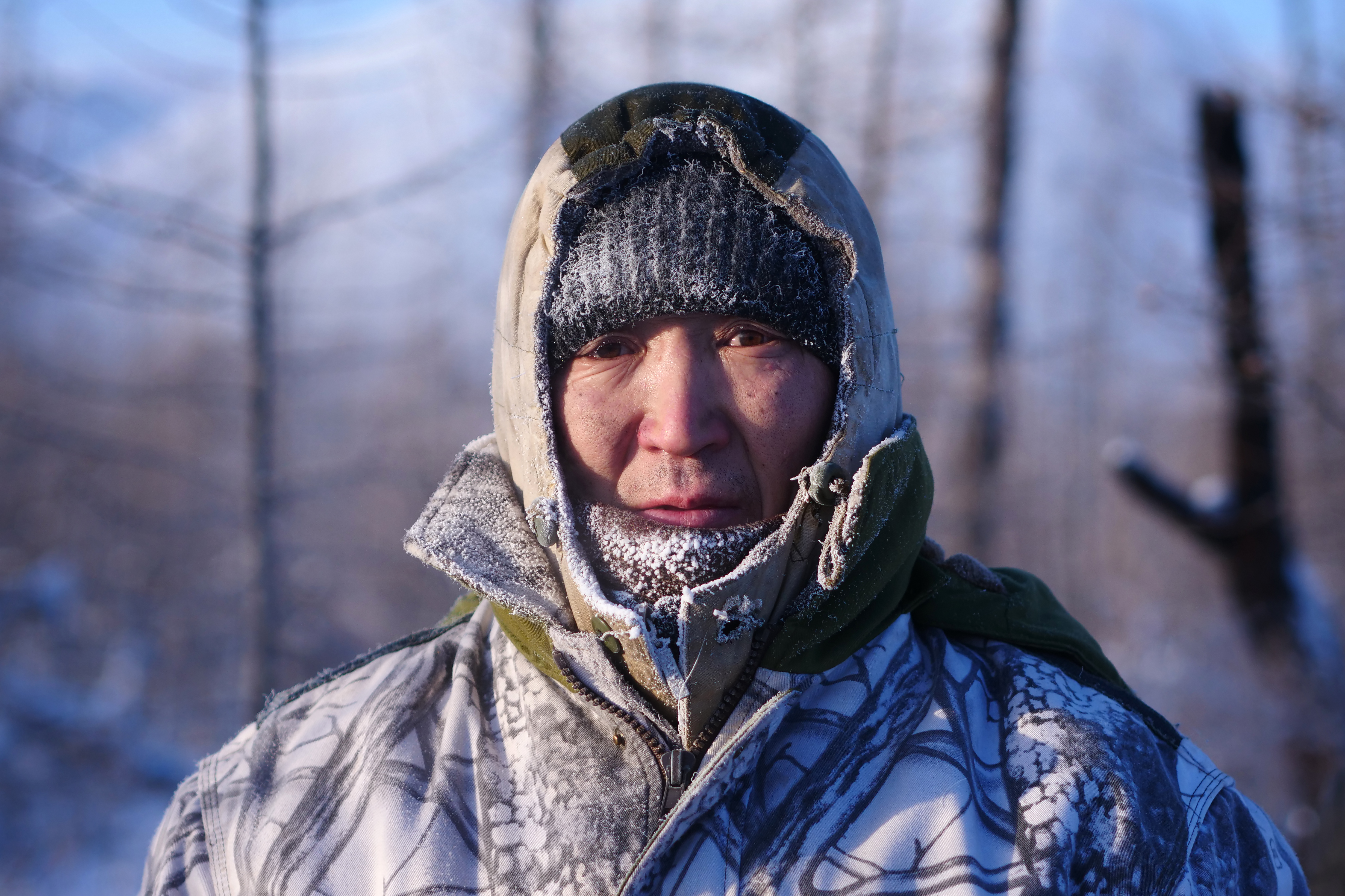
Zamyatin is a member of the minority Evenk people, whose ties to reindeer stretch back to prehistory.
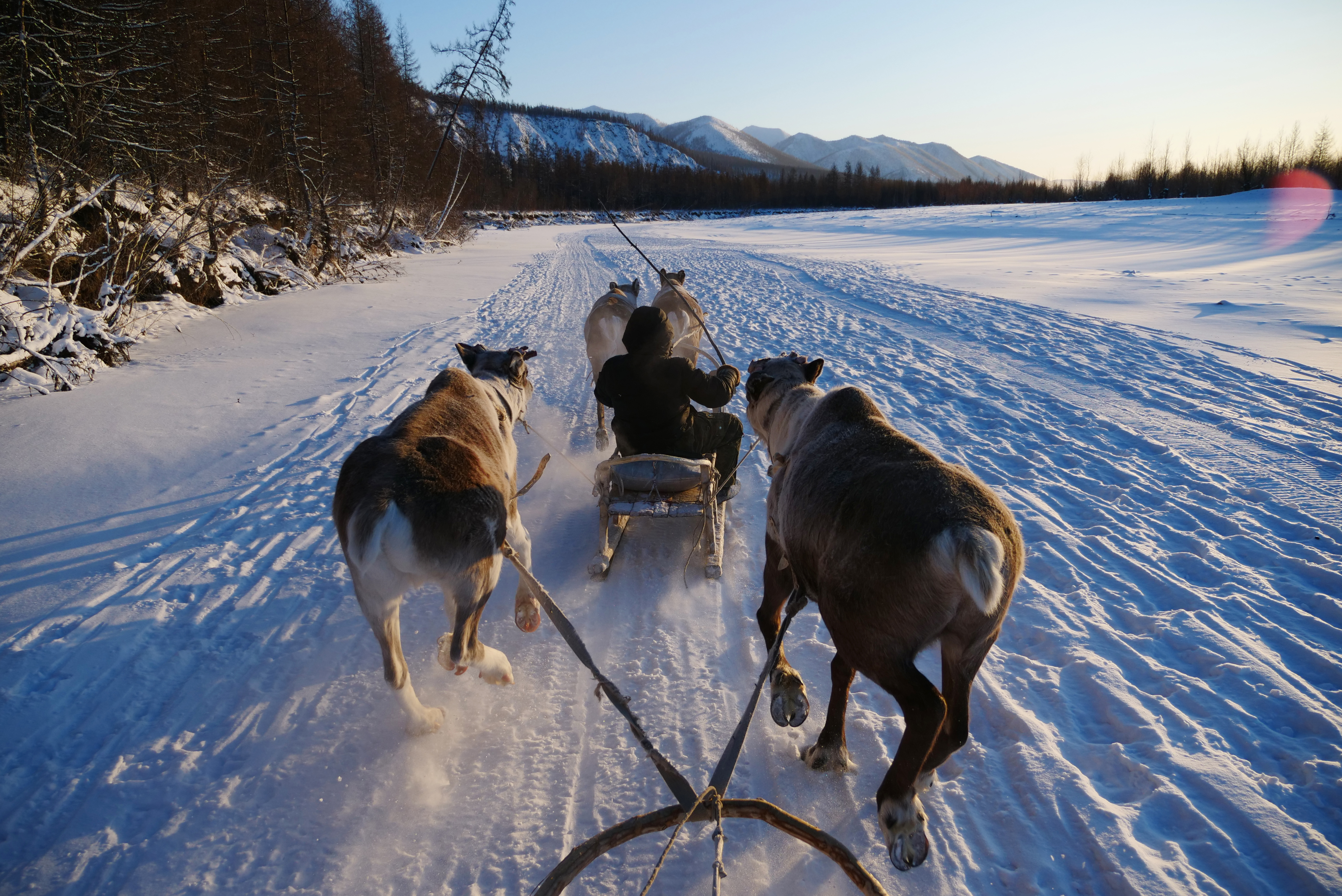
Zamyatin’s camp is accessed by reindeer sled or snowmobile along the frozen Tompo River.
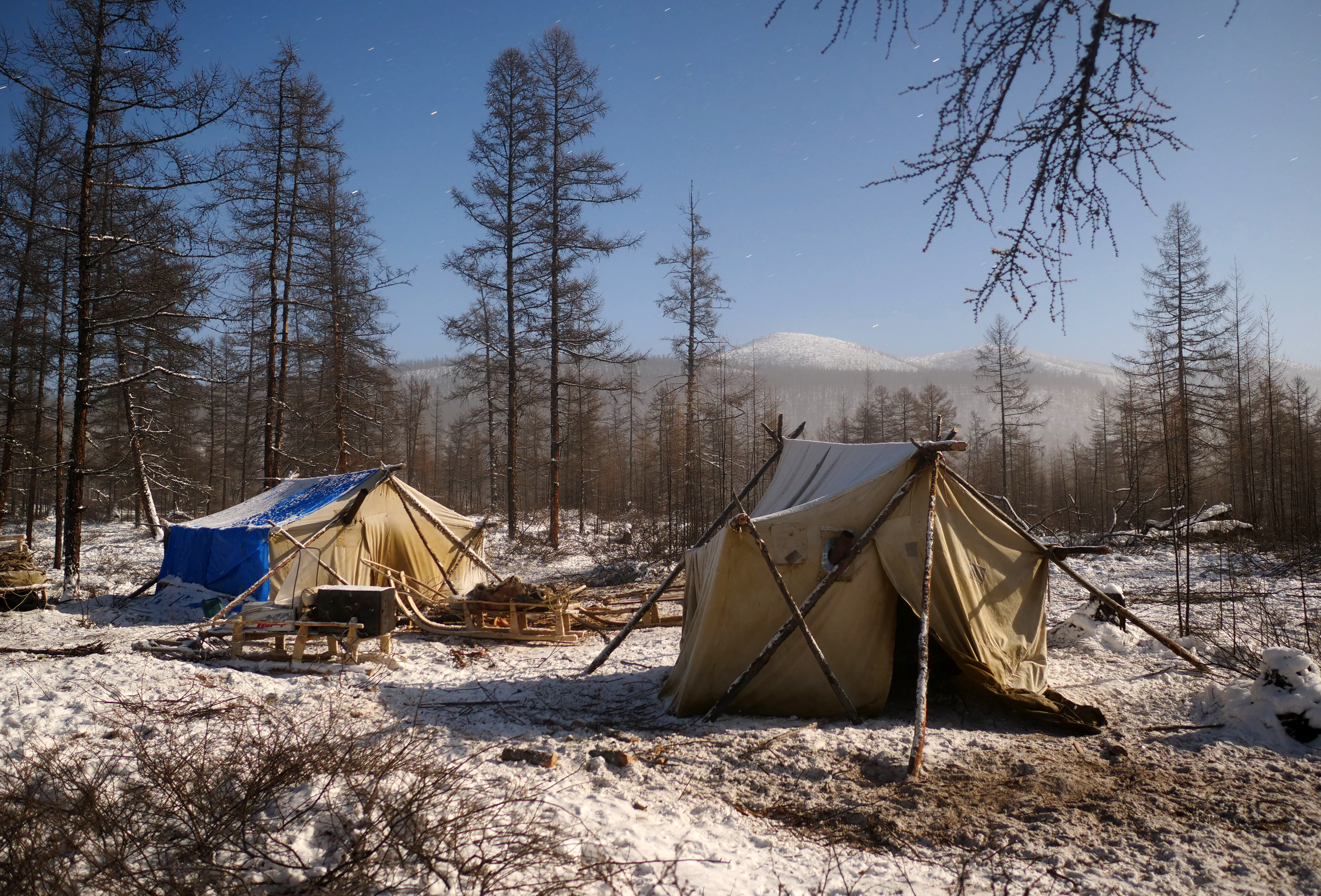
Zamyatin’s camp, made from Soviet-era tents. One is for people, the other is a kind of heatable “garage” for the reindeer herder’s snowmobile.
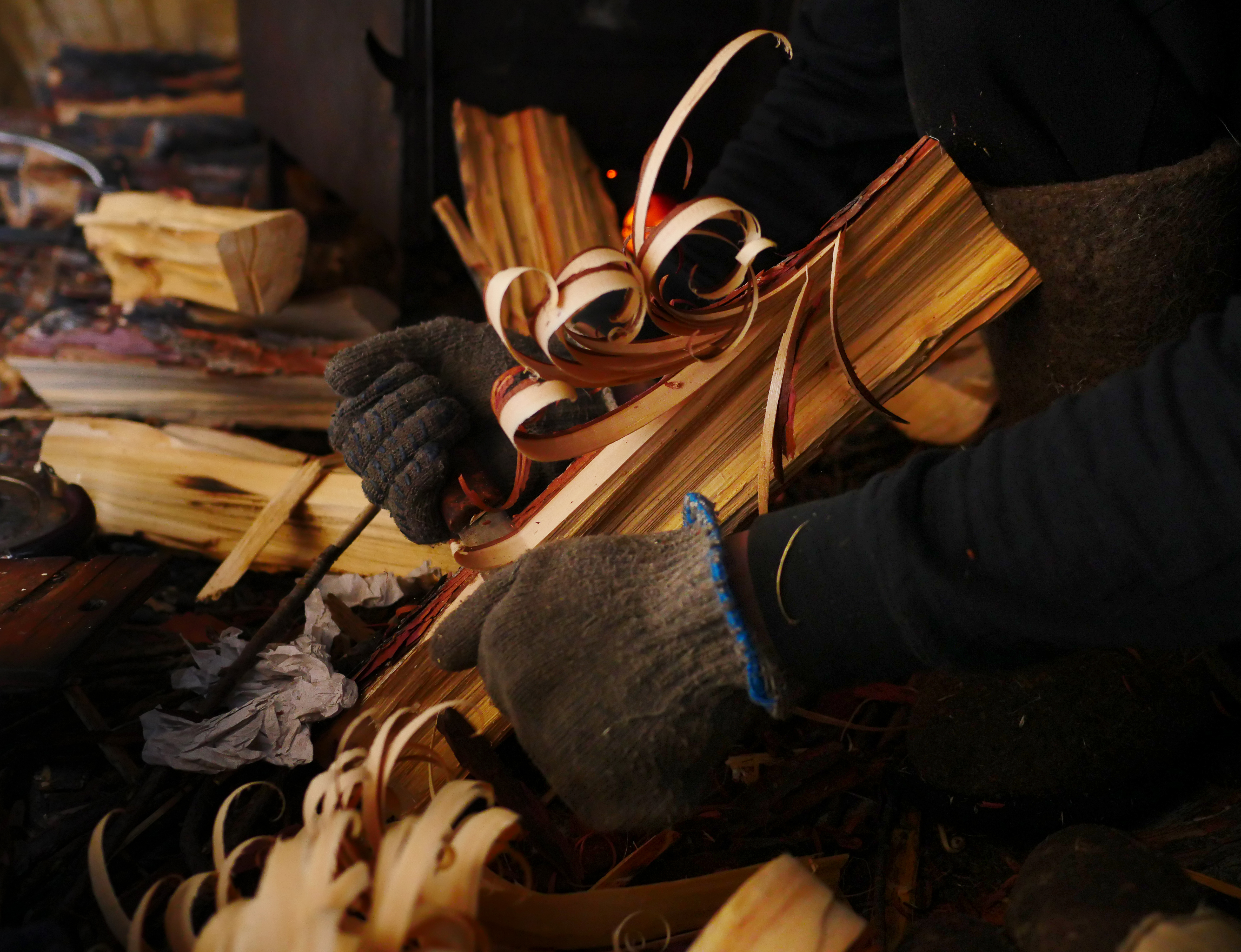
At first light, after a night in which the fire inside Zamyatin’s tent is allowed to die out, the hardened herder emerges from his bed of reindeer pelts and begins shaving kindling for the metal stove, which warms the tent surprisingly quickly.
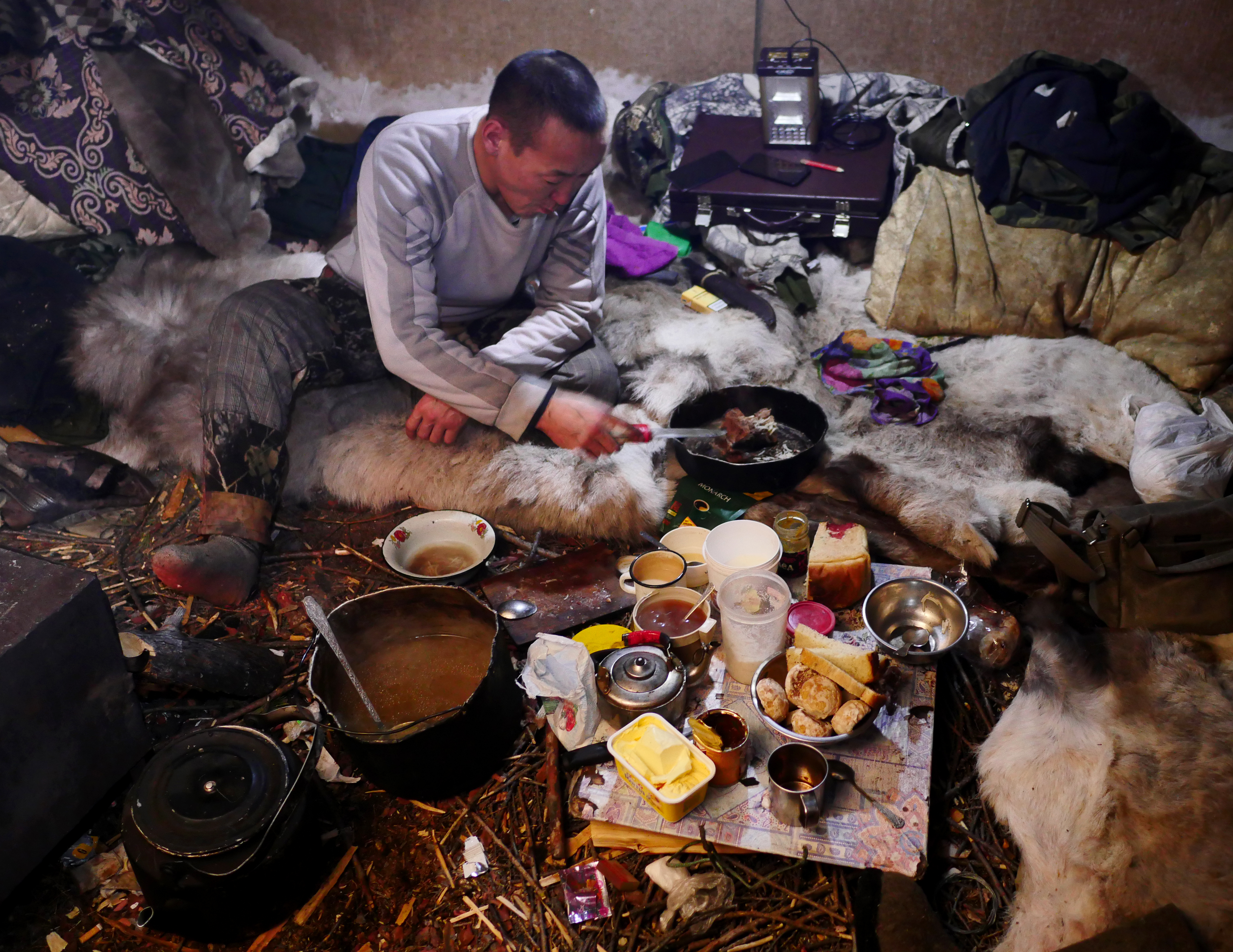
The 40-year-old cooks meals made mostly from hunted animals. During my overnight stay, we ate meals of boiled mountain-sheep meat and elk kidney fried in margarine. Zamyatin said the inside of the tent was a mess “because a woman hasn’t been in here for weeks. If my wife was with me now, this place would look like the Hilton.”
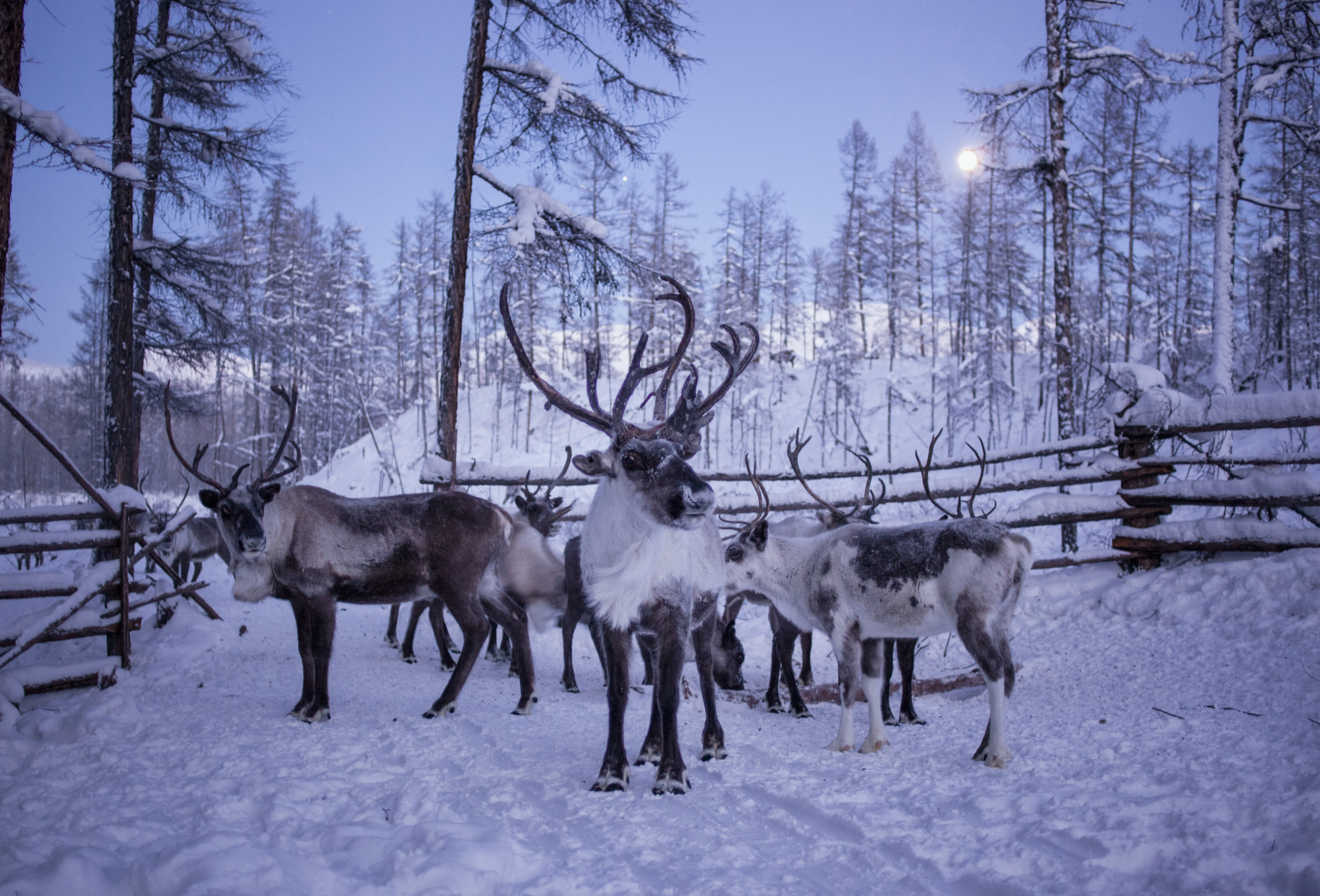
Reindeer in the landscape around Topolinoe can survive through cold snaps that can drop to near the temperature of dry ice.
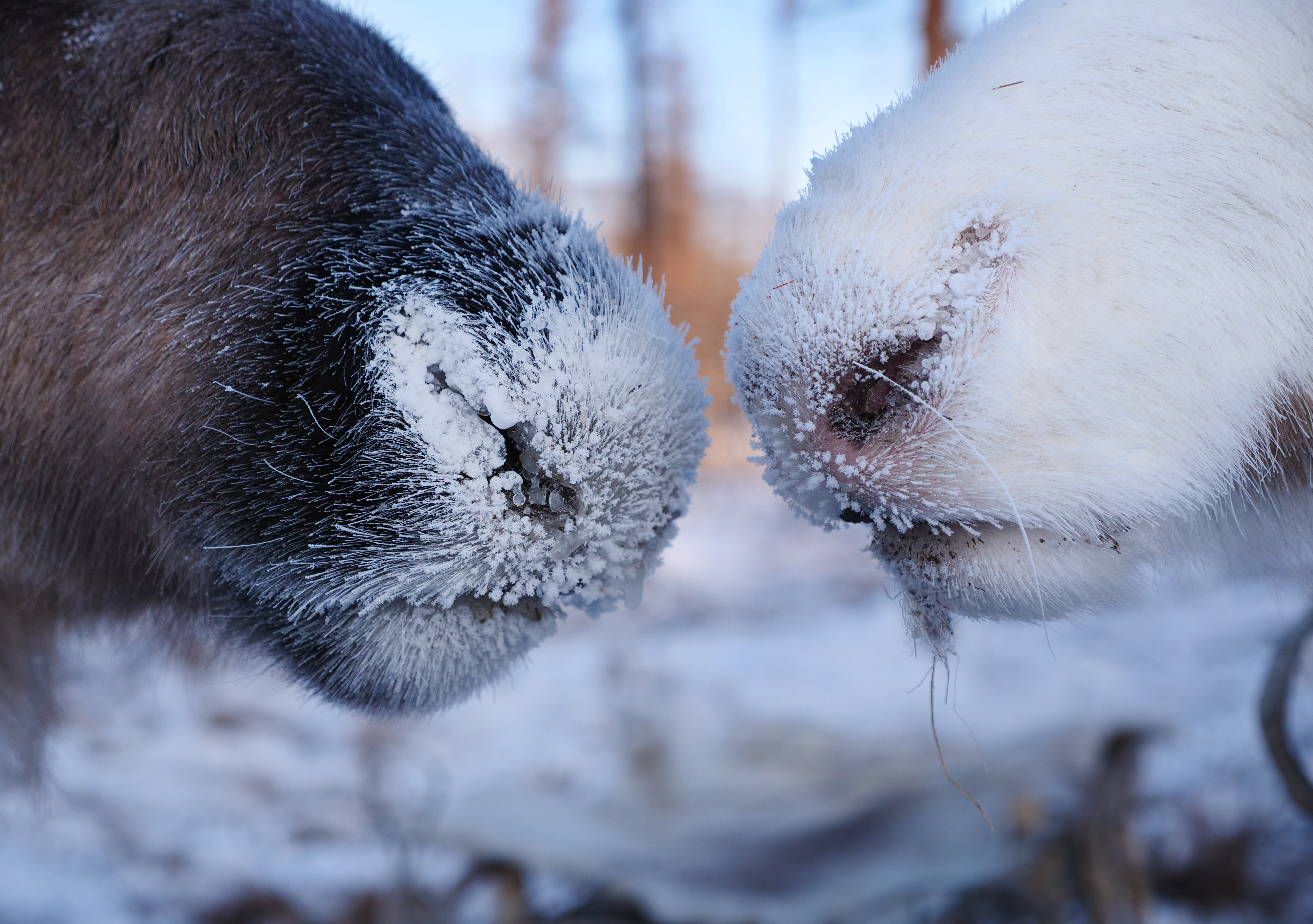
As well as a dense coat of hollow hairs (which acts as a buoyant “life jacket” when they swim across rivers in summer), the reindeer sport fuzzy noses completely covered by hair.

Zamyatin hacking a chunk of ice out of the frozen river to be used as drinking water. The veteran herder says despite the extreme cold that “sometimes hurts my lungs,” he prefers winter to the summers here.
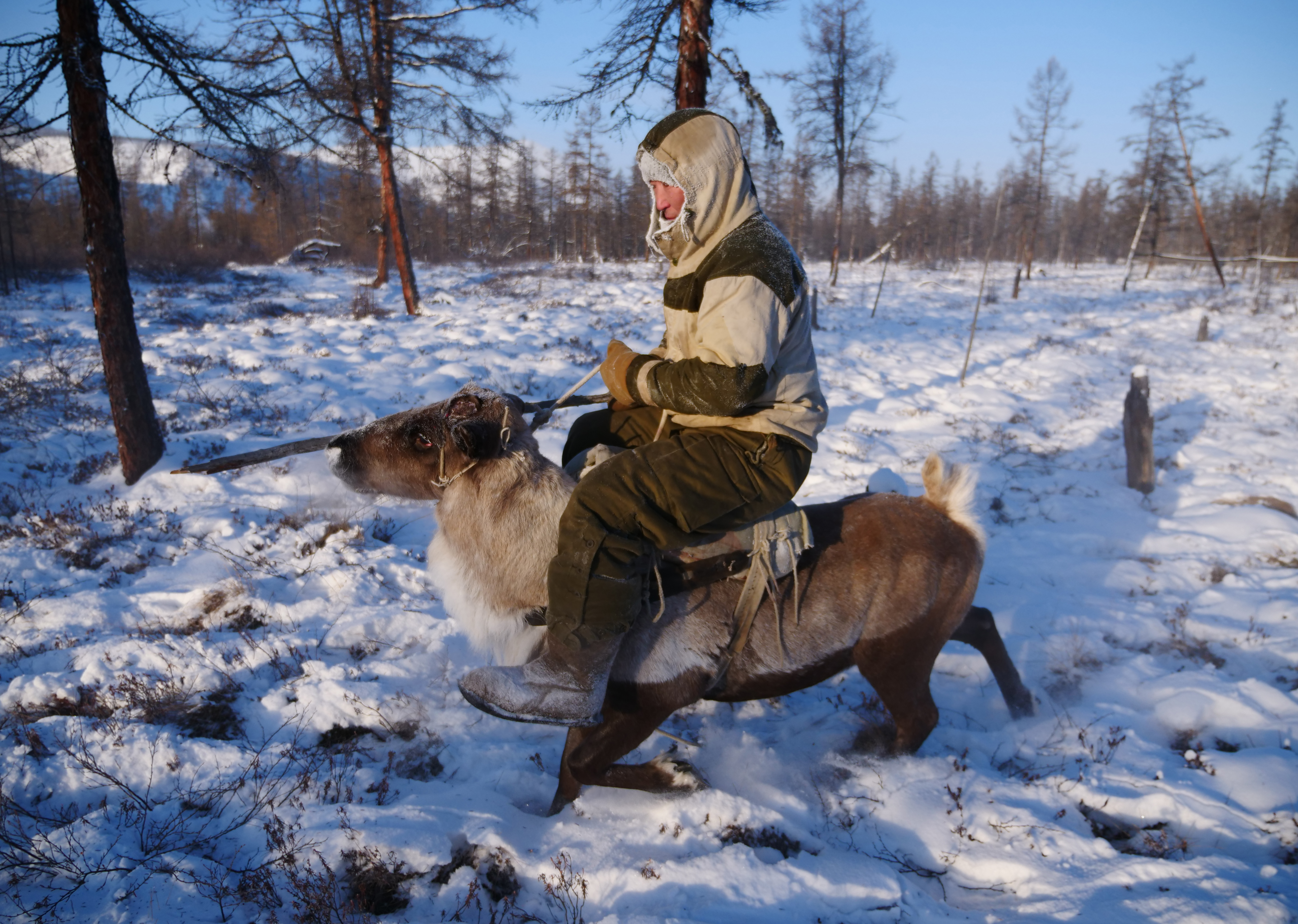
“In summer, there are mosquitos and rain, and the deer get sick. Winter is best, once the snow starts to fall, [the deer and I] can relax a little."
